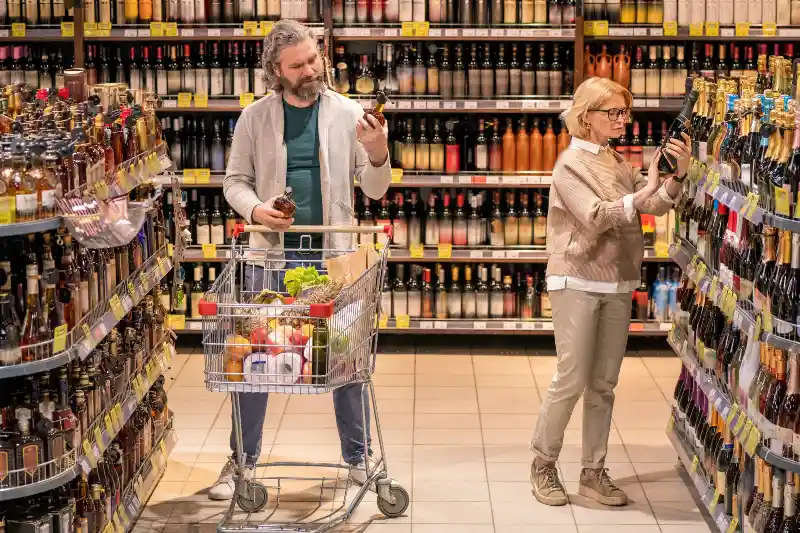The competition in the field of consumer packaged goods (CPG) is fierce as they go to consumers through retail, which is a hard business filled with challenges and opportunities.
As a marketing manager in the CPG field, learning the nuances of CPG marketing is important to understand this competitive landscape and improving your marketing results.
This article will walk you through the essentials of CPG marketing, from what products it involves to actionable strategies that you can implement.
What Products CPG Involves
Consumer packaged goods, or CPG for short, are products that consumers use up and replace on a frequent basis. These are the items you see most often on grocery store shelves or in the home essentials sections of big-box retailers.
CPG includes a variety of items:
- Food Products: Everything ranging from perishables like dairy and produce to non-perishables such as canned goods and snacks.
- Beverages: Includes soft drinks, juices, bottled water, beer, wine, and spirits.
- Household Cleaners: Detergents, disinfectants, and wipes that keep our living spaces sanitary and fresh.
- Toiletries: Personal care items like shampoos, soaps, and dental care products.
- Cosmetics: Beauty products like makeup, lotions, and fragrances.
These staple goods are necessary to everyday life, which means there’s a constant demand for them. However, because they are commodities, there’s often little to distinguish one brand from another aside from branding and marketing, making your job as a marketing manager all the more pivotal.
Challenges in the CPG Industry
The CPG industry is not without its trials. One such challenge is the high level of competition, with numerous brands vying for consumer attention.
Another is the shift towards digital spaces and e-commerce, which requires a new approach to marketing and sales.
Moreover, there are increased concerns from consumers about sustainable and ethical practices, pressing companies to reconsider their manufacturing and packaging methods.
These obstacles are compounded by the fast-paced nature of the industry, where consumer preferences and trends can change quickly and unpredictably.
Understanding and overcoming these challenges is central to crafting a successful CPG marketing strategy.
What Is CPG Marketing?
CPG marketing refers to the strategic promotion of consumer packaged goods to drive sales and build brand loyalty.
Unlike marketing for products that are sold infrequently or have a long life cycle, CPG marketing must be dynamic to incite quick decision-making and frequent purchases. It’s about creating a compelling brand story and establishing a connection with consumers through various touchpoints both in-store and online.
As a marketing manager, your goal within CPG marketing is to make your brand the preferred choice among many similar products.
You must understand target demographics, manage product placement, and ensure consistent brand messaging across different marketing channels.
An effective CPG marketing strategy will utilize a blend of traditional methods like print ads and in-store promotions, as well as digital tactics such as social media campaigns and search engine optimization.
Why Businesses Should Invest in CPG Marketing
Investing in CPG marketing is vital for businesses that wish to survive and thrive in a crowded marketplace. With consumers constantly bombarded with choices, a well-executed marketing strategy is what will make your product stand out on the shelves and in digital searches.
By doing so, you can increase market share, foster customer loyalty, and ultimately drive your brand’s profitability.
Solid CPG marketing helps to establish brand recognition and recall, which is instrumental in consumer purchase behavior.
When a customer recognizes and trusts your brand, they’re more likely to choose your product over an unfamiliar one. Moreover, effective marketing can lead to product trial, repeat purchases, and brand advocacy among consumers.
Additionally, with the ever-growing importance of data analytics, investing in CPG marketing presents the opportunity to gain valuable insights into consumer behavior and preferences. This, in turn, can guide product development, inventory management, and future marketing campaigns.
In short, businesses in the CPG sector must not overlook the power of targeted marketing efforts. Doing so can be the difference between a product that simply sits on the shelf and one that moves off it rapidly, earning its place in consumers’ homes and lives.
CPG Marketing Ways
To effectively market CPG goods, you can incorporate several marketing strategies:
1. Search Engine Optimization (SEO)
In a world where most people start their buying journey with a Google search, you need to ensure your products come up at the top of those search results.
SEO is the process of optimizing your online content so that search engines like Google favor it in the ranking process. This means researching keywords that are relevant to your product and industry, then creating valuable content that incorporates these terms.
SEO is not a quick fix but a long-term strategy that requires ongoing effort. However, the results merit the investment. By improving your search engine rankings, you can increase the visibility of your products and drive more organic traffic to your website or e-commerce platform.
2. Community Marketing
Building a community around your brand can result in loyal customers who engage with and advocate for your products. This involves fostering a sense of belonging among your consumers, perhaps through a shared commitment to values, interests, or causes associated with your brand.
Developing a robust community marketing strategy could include creating engaging content on your blog, hosting events, offering exclusive benefits to your community members, or even involving them in product development.
3. Social Media Marketing
Social media platforms are invaluable for CPG marketing. They allow for direct engagement with consumers, storytelling, and sharing dynamic content such as images, videos, and testimonials. Through social media, you can reach a large audience with relative ease and at a lower cost compared to traditional media.
Create shareable content that resonates with your audience, showcases your products in use, and encourages interaction.
Platforms like Instagram and Pinterest are particularly suitable for visually driven CPG goods, while Twitter and Facebook can be great for customer service and community building. Don’t forget to monitor social media trends and adapt your content to what is current and engaging for your audience.
Social media also offers sophisticated targeting options for paid advertising, ensuring that your message reaches the most relevant consumers based on demographics, interests, behaviors, and more.
4. Influencer Marketing
Influencers can be powerful allies in the CPG industry. Their endorsements can lend credibility and extend the reach of your brand.
Choose influencers carefully – those with an engaged following, rather than just a large number of followers. Craft campaigns where influencers showcase your products in an authentic manner, creating a compelling reason for their followers to try them out for themselves.
5. In-Store Promotions
Despite the rise of e-commerce, in-store experiences remain a critical part of CPG marketing. Point-of-sale displays, product samples, and promotions like discounts or coupons can entice consumers to try new products and increase basket size.
Consider also the layout of the store and how your products are placed. Eye-level shelving and endcap displays can significantly boost product visibility and sales. Collaborative efforts with retailers for special events or loyalty programs can also create excitement around your
products and enhance the in-store experience for consumers.
The relationship you foster with retailers is important, as they are the gatekeepers to consumers in the brick-and-mortar realm. Providing them with product training and collaborating on joint marketing efforts can lead to mutually beneficial outcomes.
7. Email Marketing
Email marketing remains a powerful tool in CPG marketing due to its direct and personalized approach. Use email campaigns to keep your brand top-of-mind, share information about new products, offer exclusive promotions, and provide valuable content that educates and inspires subscribers.
Segment your email lists to ensure the right messages reach the right audiences. Personalization goes beyond just inserting a name in an email. Tailor content to consumer behavior, past purchases, and preferences to increase the chances of conversion.
8. Content Marketing
Through compelling storytelling, content marketing can be used to educate consumers, offer entertainment, and provide solutions to problems they may encounter. This could involve recipe blogs for food products, how-to guides for cleaning items, or beauty tips for cosmetics.
Your content should aim not only to inform but also to inspire and engage. Using SEO best practices, this content can also drive organic search traffic, making it a cornerstone of your digital marketing strategy.
9. Packaging Innovation
Never underestimate the power of packaging. It’s often the first interaction a consumer has with your product. Innovative packaging can differentiate your brand from competitors and can influence purchasing decisions at the point of sale.
Consider how your packaging can tell your brand’s story, reflect your values (such as sustainability), and engage the consumer’s senses. Limited edition packaging, interactive elements, and smart design that improves functionality or convenience can also create buzz and enhance the perceived value of your product.
10. Loyalty Programs
Loyalty programs encourage repeat purchases by rewarding customers. These programs can provide valuable data on purchasing patterns, which you can use to tailor marketing efforts and product offerings.
Design a program that offers genuine value to the customer, such as early access to new products, exclusive discounts, or points that can be redeemed for items or experiences. The key is to make it easy to join and participate, with clear benefits that incentivize ongoing engagement with your brand.
Conclusion
As you navigate the complex world of CPG marketing, remember that it is a blend of art and science. Understanding your consumer, being authentic in your storytelling, and leveraging data-driven insights are key to refining your strategies.
Embrace innovation, stay adaptable to changes in consumer behavior, and never underestimate the power of building strong relationships – with both retail partners and customers.




